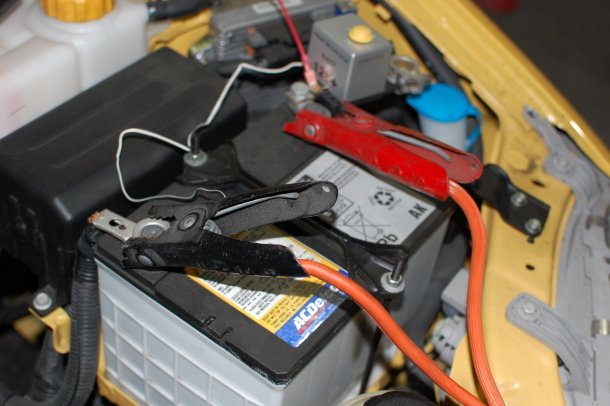The goal now is to keep it in the bad state where everything is dead, so we have something to diagnose. This is commonly caused by a bad connection where the smaller battery positive wire is bolted to the under-hood fuse box. The jump-start doesn't actually solve anything, but it seems to be a recurring part of the story. That shouldn't be a factor, but for some reason it is a real common clue or observation.
We like to really find the problem so we have confidence in our diagnosis, rather than just doing a bunch of stuff, then not knowing which step solved it. To do that, you'll need a voltmeter. If you don't have one already, Harbor Freight Tools has a perfectly fine one for less than ten dollars. You can also find them at Walmart, hardware stores, and auto parts stores. Here's a link to an article about how to use them if you don't know already:
https://www.2carpros.com/articles/how-to-use-a-voltmeter
This article shows using an "auto-ranging" meter. Most don't have that feature, and must be set manually to the correct range. I can help with that if you need it.
Turn the head light switch on so current is trying to flow. That's an important step in making the drop in voltage show up to reveal the bad connection. Start by placing the meter probes right on the battery's posts. You must find 12.6 volts if the battery is good and fully-charged. Next, move one probe from the post to the cable clamp on that post. You should see the same voltage. Now move the other probe from its post to its cable clamp. You've only moved each probe about a half inch, and they're still in the same place in the circuit, so the readings shouldn't change. If you do see the reading drop significantly when you moved one of the probes, you've just crossed over the bad connection.
Move the probe from the battery's negative cable clamp to a paint-free point on the body. Small bolt heads are usually a good place. If it's rusty, you might have to scratch and dig with the probe for it to make a good connection. If you find the voltage has dropped significantly from 12.6 volts, follow the smaller battery negative wire to where it bolts to the body sheet metal. That connection is rusted or the wire is corroded off the terminal.
If the voltage was still around 12.6 volts in the last step, move the other probe from the positive cable clamp to the under-hood fuse box. Touch the probe right to the terminal at the end of the smaller positive wire, then move it to the stud that terminal is bolted to. In most of these cases, you'll find 12.6 volts on the terminal, but close to 0 volts on the stud. That would be proof that connection must be cleaned up and tightened.
A bad connection at that point removes the battery from the charging circuit when the engine is running. The voltage regulator has a limited ability to do its job when the battery isn't in the circuit. They are two parts of a team. Without the battery in the circuit, it is possible for system voltage to go to high. That can damage multiple computers and burn out any light bulbs that are turned on.
Don't worry about the low idle speed problem. To make a long story short, once the rest of the problems are solved, you will solve the idle speed problem by driving the truck at highway speed with the engine warmed up, then coasting for at least seven seconds without touching the pedals.
Sunday, October 6th, 2019 AT 2:36 PM



